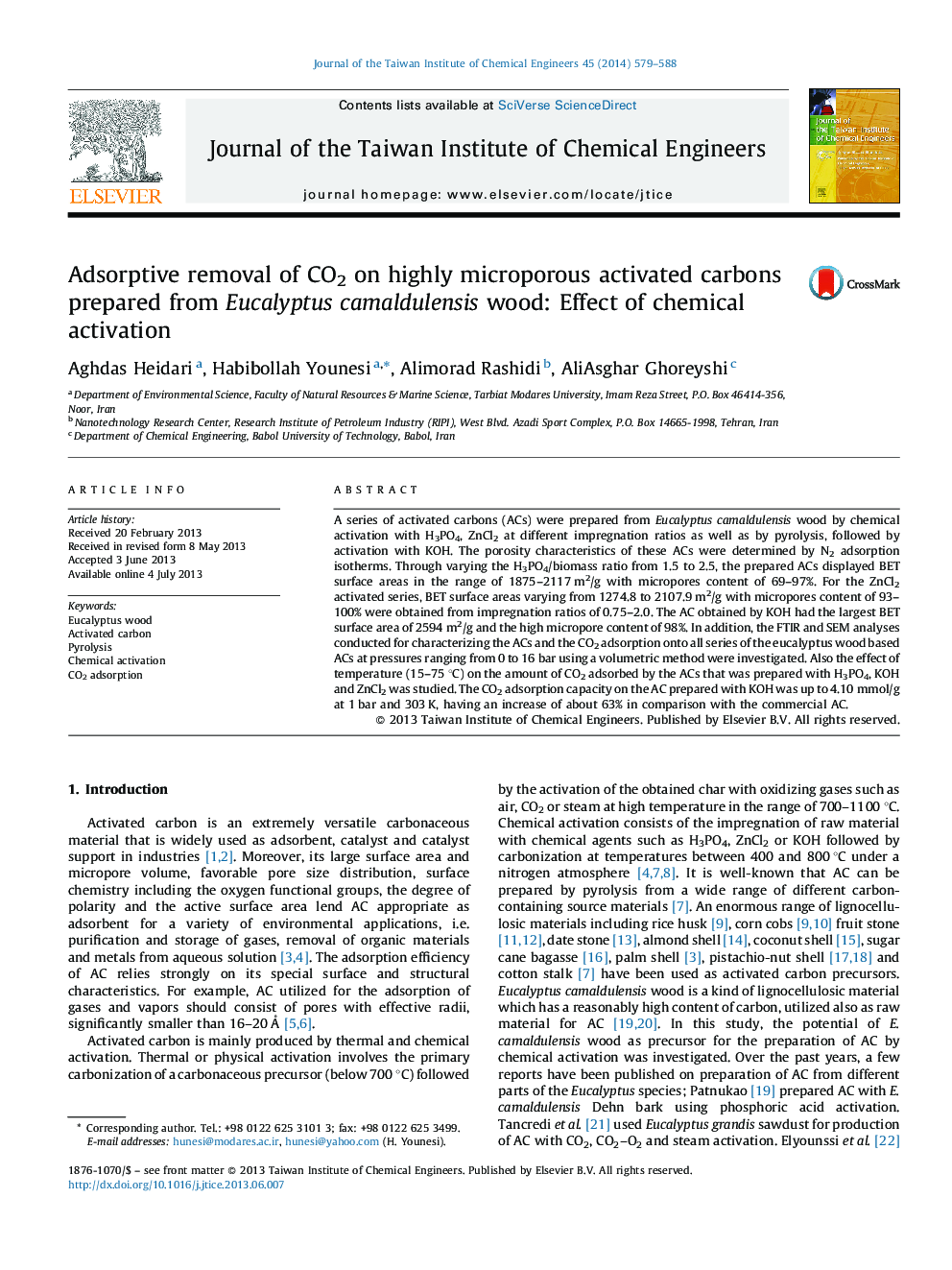| Article ID | Journal | Published Year | Pages | File Type |
|---|---|---|---|---|
| 691398 | Journal of the Taiwan Institute of Chemical Engineers | 2014 | 10 Pages |
•High surface area and microporous ACs derived from Eucalyptus by chemical agents for CO2 capture.•KOH activation leads to AC with high surface area and micropore volume resulted highest CO2 capture.•High surface area and high micro pore volume result in the high CO2 capture.•The amount of CO2 adsorbed by AC increased in lower temperature compared to high temperature.•CO2 sorption uptake of obtained AC is remarkably more than commercial AC, approximately four-folds.
A series of activated carbons (ACs) were prepared from Eucalyptus camaldulensis wood by chemical activation with H3PO4, ZnCl2 at different impregnation ratios as well as by pyrolysis, followed by activation with KOH. The porosity characteristics of these ACs were determined by N2 adsorption isotherms. Through varying the H3PO4/biomass ratio from 1.5 to 2.5, the prepared ACs displayed BET surface areas in the range of 1875–2117 m2/g with micropores content of 69–97%. For the ZnCl2 activated series, BET surface areas varying from 1274.8 to 2107.9 m2/g with micropores content of 93–100% were obtained from impregnation ratios of 0.75–2.0. The AC obtained by KOH had the largest BET surface area of 2594 m2/g and the high micropore content of 98%. In addition, the FTIR and SEM analyses conducted for characterizing the ACs and the CO2 adsorption onto all series of the eucalyptus wood based ACs at pressures ranging from 0 to 16 bar using a volumetric method were investigated. Also the effect of temperature (15–75 °C) on the amount of CO2 adsorbed by the ACs that was prepared with H3PO4, KOH and ZnCl2 was studied. The CO2 adsorption capacity on the AC prepared with KOH was up to 4.10 mmol/g at 1 bar and 303 K, having an increase of about 63% in comparison with the commercial AC.
